





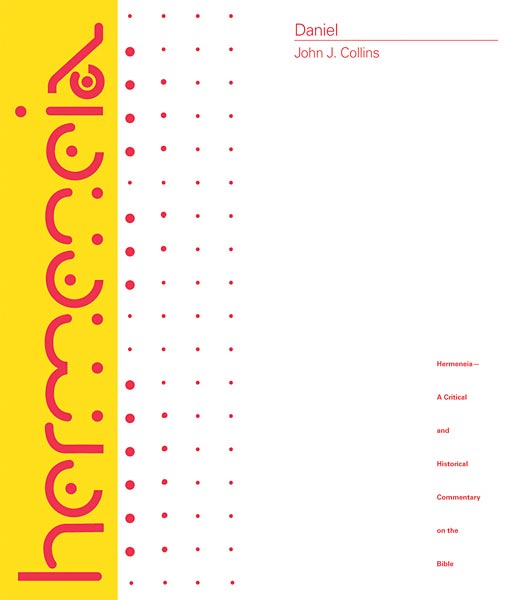
The most comprehensive English-language commentary on Daniel in 65 years. Collins situates the Old Testament in its historical context and offers a full explanation of the text, especially its religious imagery.
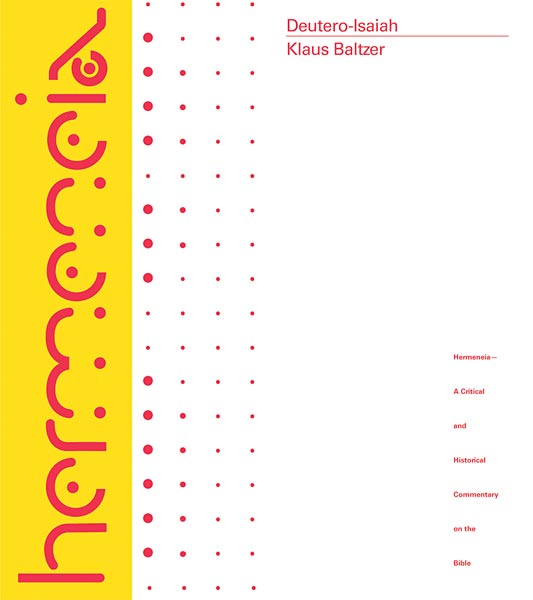
Deutero-Isaiah's work, which comprises Isaiah chapters 40–55, has exerted its influence on testimonies of faith in both Jewish and Christian tradition down to the present day.
Baltzer's magnificent commentary places the document in the new context after the Exile. The experience of catastrophe, the need to grapple with new problems, and hope for a peaceful future are linked in Deutero-Isaiah's composition. The work aims to establish accord between adherents of the Jacob/Israel tradition on the one hand and those committed to the Zion/Jerusalem tradition on the other — the background being the tensions between the exiles and the people who had remained on the land.
Along with masterful presentation of the book's themes, Baltzer also develops a creative hypothesis about the work's genre, identifying it as a "liturgical drama" in six acts, which makes it possible to understand the text's function in worship and its significance as a literary text of supreme artistry
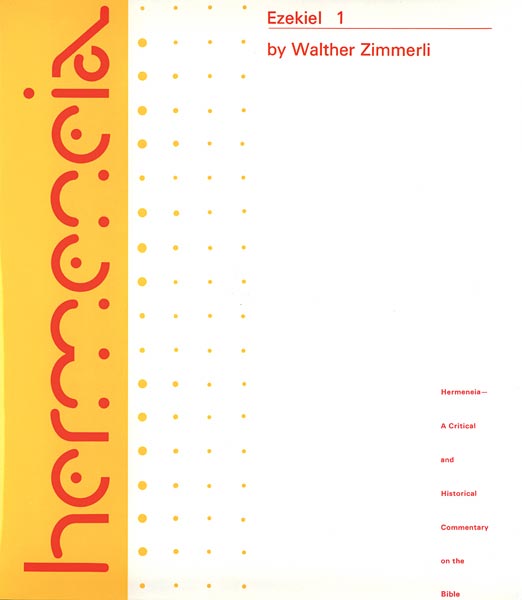
This book will become one of the classic works on Ezekiel. It is so thorough that it will be most useful to the scholar and serious students.
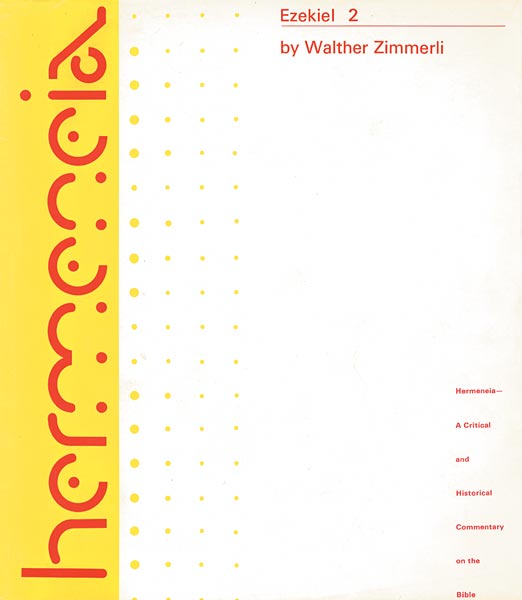
A major achievement ... An essential tool for any serious study of Ezekiel.

The eighth-century BCE Isaiah of Jerusalem, the so-called First Isaiah, is one of the most important theological voices in the Bible. J. J. M. Roberts takes a classical historical-critical approach to his interpretation of this material, making good use of his broad comparative knowledge of ancient Near Eastern historical and religious sources.
In light of Isaiah’s very long prophetic ministry of at least thirty-eight years, and perhaps as long as fifty-three years, Roberts also suggests Isaiah often reedited older oracles from early in his ministry to address new, though somewhat analogous situations, albeit with different players, later in his ministry, without erasing telltale signs of the material’s earlier origin.
In many cases, this suggestion provides a better explanation for glaring inconsistencies in an apparently connected text than the common fragmentation of the text that attributes such inconsistencies to later editors who either misunderstood or intentionally altered Isaiah’s message for their own purposes.
Hermeneia is designed for the serious student of the Bible. It makes full use of ancient Semitic and classical languages; at the same time, English translations of all comparative materials—Greek, Latin, Canaanite, or Akkadian—are supplied alongside the citation of the source in its original language. Insofar as possible, the aim is to provide the student or scholar with full critical discussion of each problem of interpretation and with the primary data upon which the discussion is based.
The editors of Hermeneia impose no systematic-theological perspective upon the series (directly, or indirectly by selection of authors). Its authors lay bare the ancient meaning of a biblical work or pericope. In this way the text's human relevance should become transparent, as is always the case in competent historical discourse. However, the series eschews for itself homiletical translation of the Bible.
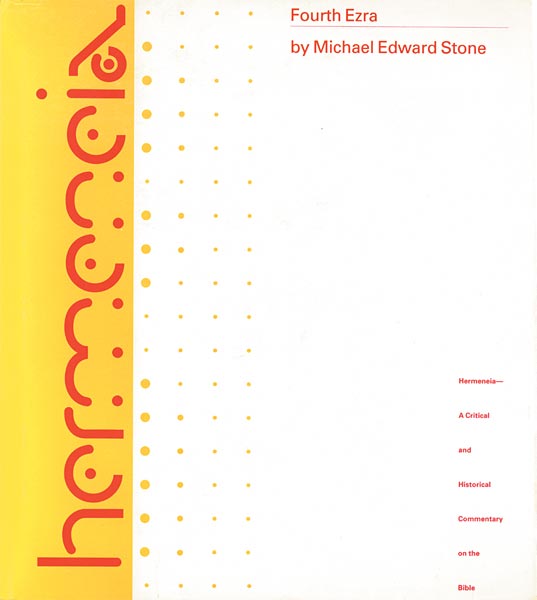
Fourth Ezra is a magnificent commentary, the definitive and standard work for generations to come.
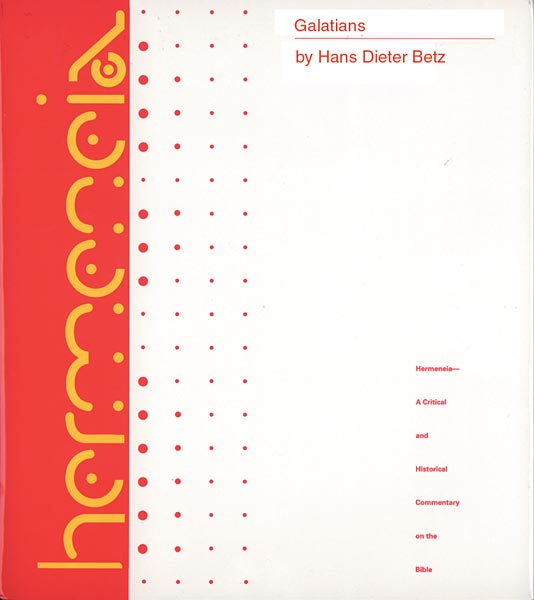
Betz exhibits a massive control of the literature on Galatians and especially of the ancient literatuer relevant for understanding it. He has a gently rigorous way of demolishing fanciful and unsupported exegesis of the past while still taking clear positions on controversial issues.
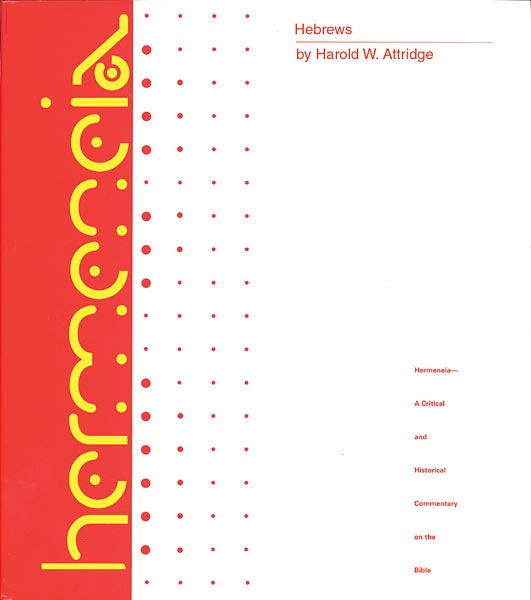
The first major and comprehensive English- language commentary on Hebrews in over fifty years. Presents a balanced and richly documented interpretation.
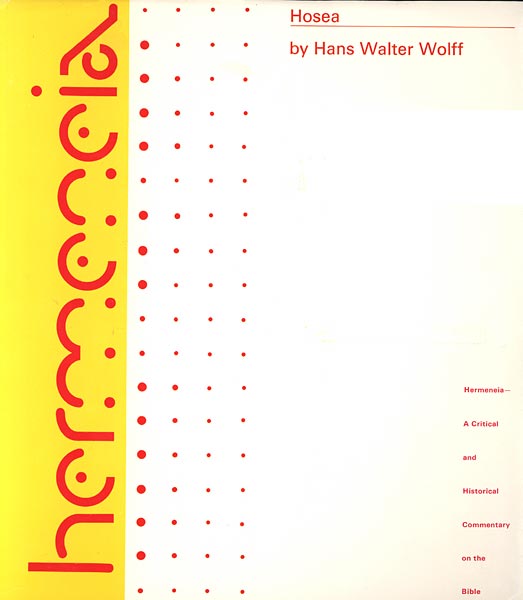
A fascinating commentary on one of the most difficult of the Old Testament prophets.
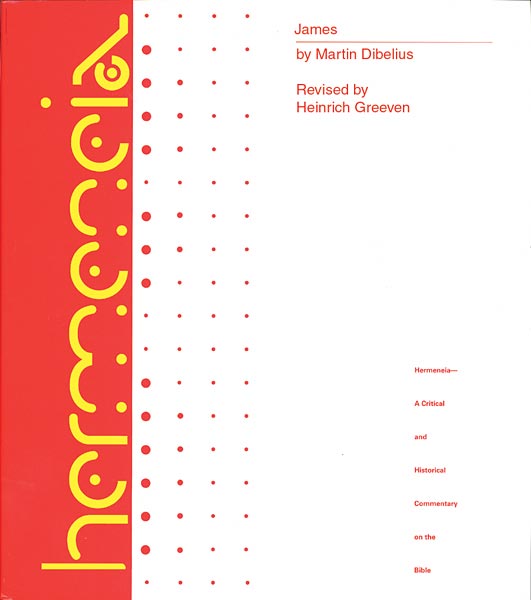
A distinguished contribution to New Testament scholarship ... Represents a classic position that must be taken into account by all other interpreters.
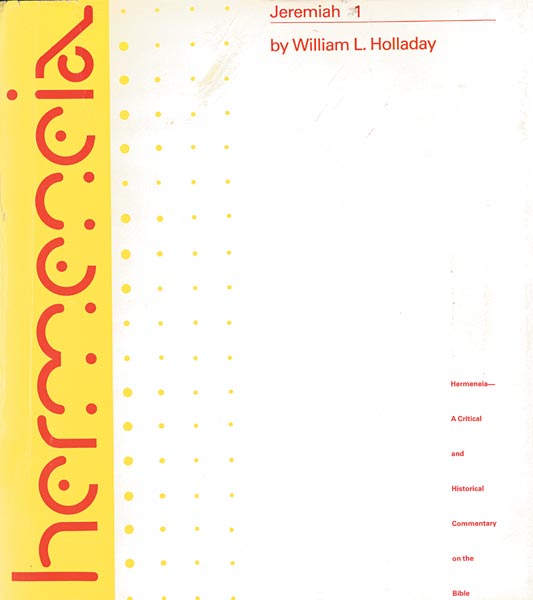
Holladay's English rendering translates identical words and phrases consistent, and compares the parallel passages which are a prominent feature of Jeremiah.
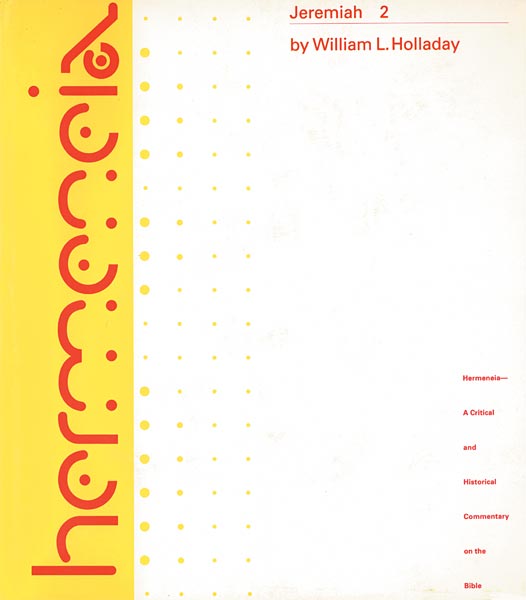
Includes a full introduction, which deals with the development of the text and the literary development from the earliest dictated scrolls to its final form.
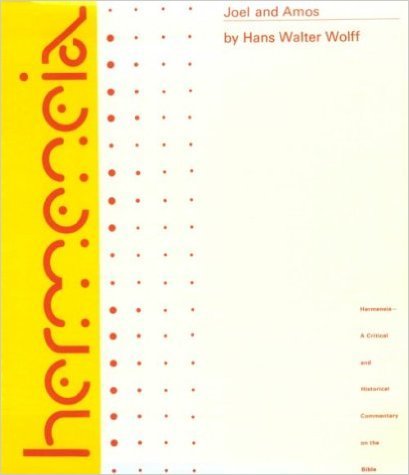
Joel and Amos provides a thorough examination of these two prophetic Old Testament books. With clear, concise commentary, Wolff elucidates the theology found within.
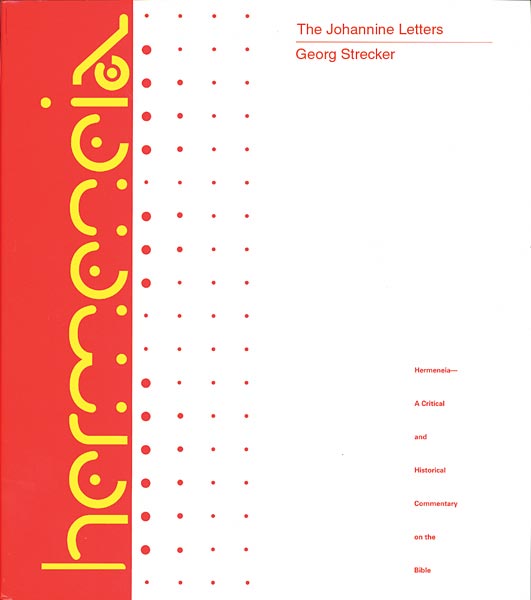
A classic commentary on 1, 2, and 3 John from a well-known name in the field of biblical studies. Bultmann addresses issues of authorship and source criticism into his discussion of the epistles, largely siding with Haenchen and Schnackenburg.
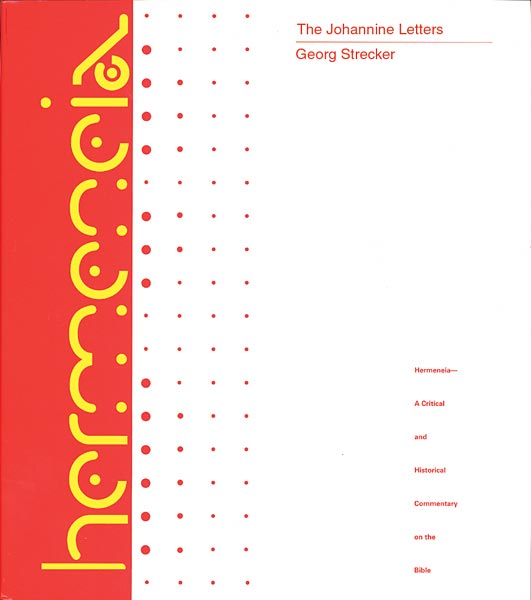
A scholarly treatment of the major literary, exegetical, and theological issues connected with the Johannine epistles, presented in a detailed and sustained fashion.
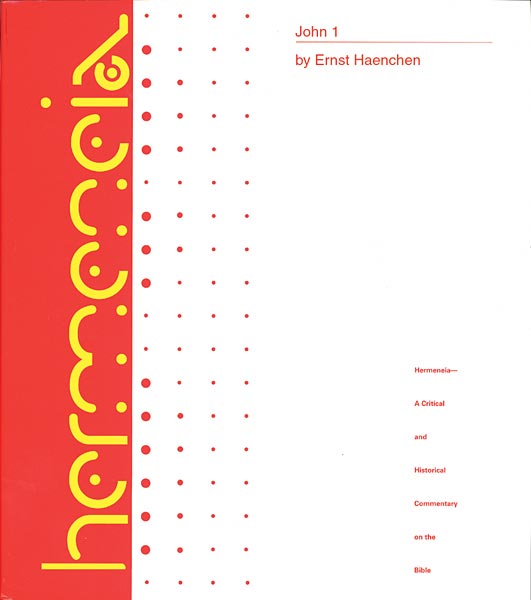
Contains a number of valuable insights. The introductory material on Johannine criticism is some of the clearest exposition for students available anywhere.
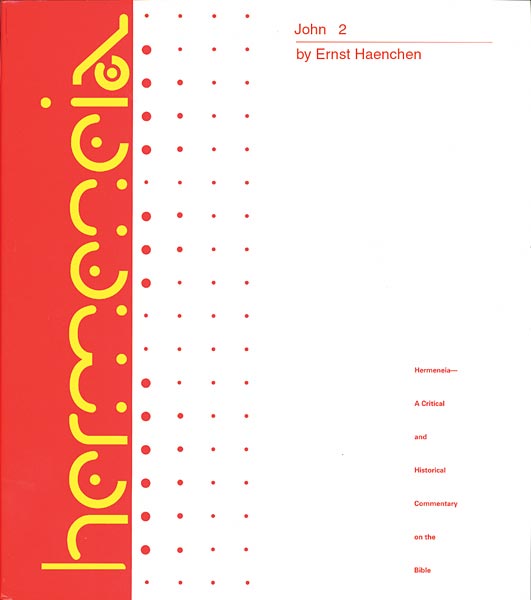
Contains a number of valuable insights. The introductory material on Johannine criticism is some of the clearest exposition for students available anywhere.
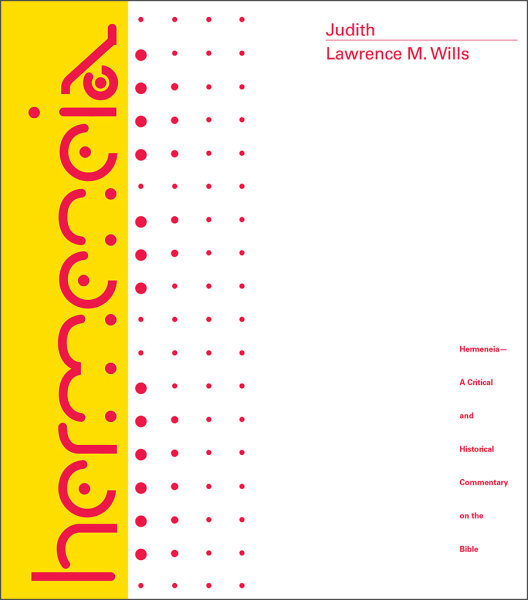
Judith tells the story of a beautiful Jewish woman who enters the tent of an invading general, gets him drunk, and then slices off his head, thus saving her village and Jerusalem. This short novella was somewhat surprisingly included in the early Christian versions of the Old Testament and has played an important role in the Western tradition ever since.
This commentary provides a detailed analysis of the text's composition and its meaning in its original historical context, and thoroughly surveys the history of Judith scholarship. Lawrence M. Wills not only considers Judith's relation to earlier biblical texts—how the author played upon previous biblical motifs and interpreted important biblical passages—but also addresses the rise of Judith and other Jewish novellas in the context of ancient Near Eastern and Greek literature, as well as their relation to cross-cultural folk motifs.
Because of the popularity of Judith in art and culture, this volume also addresses the book's history of interpretation in paintings, sculpture, music, drama, and literature. A number of images of artistic depictions of Judith are included and discussed in detail.
Hermeneia is designed for the serious student of the Bible. It makes full use of ancient Semitic and classical languages; at the same time, English translations of all comparative materials—Greek, Latin, Canaanite, or Akkadian—are supplied alongside the citation of the source in its original language. Insofar as possible, the aim is to provide the student or scholar with full critical discussion of each problem of interpretation and with the primary data upon which the discussion is based.
The editors of Hermeneia impose no systematic-theological perspective upon the series (directly, or indirectly by selection of authors). Its authors lay bare the ancient meaning of a biblical work or pericope. In this way the text's human relevance should become transparent, as is always the case in competent historical discourse. However, the series eschews for itself homiletical translation of the Bible.
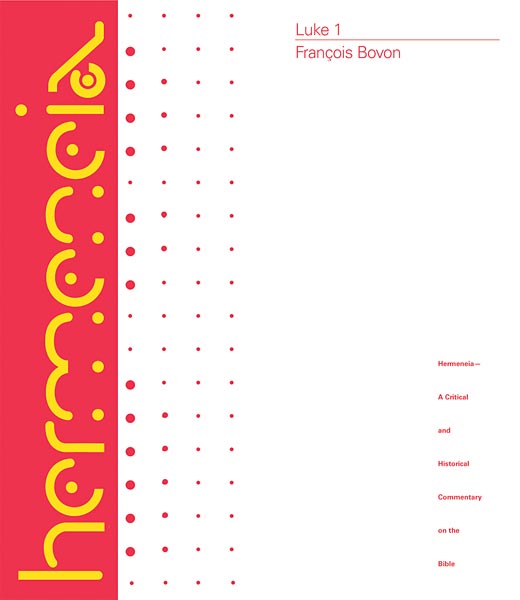
This is the first of a three-volume commentary on the Gospel of Luke, covering the birth narratives through the Galilean ministry of Jesus. The introduction covers the text-critical questions of the Gospel, as well as its canonization, language, structure, origin, and theological profile. Bovon argues that Luke is not a direct student of Paul, but represents a specific form of the Pauline school in the third generation of the churches. The author also treats how the Gospel was used in later generations: writers from the early church, the Middle Ages, and the Reformation. He includes excursuses on "The Virgin Birth and the History of Religions," "The Devil," "The Word of God," and "Forgiveness of Sins."
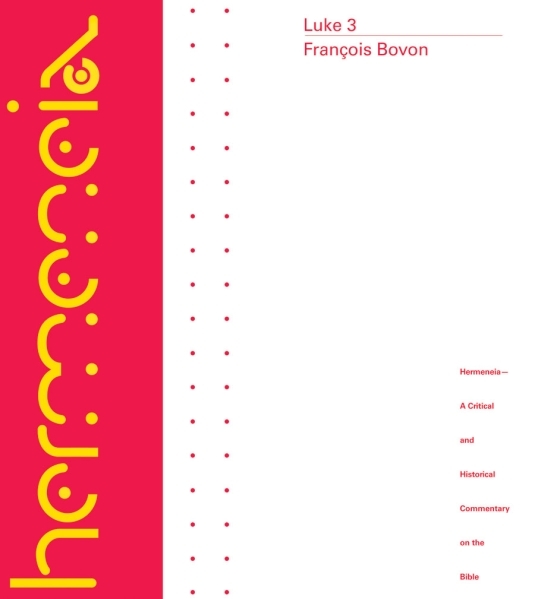
François Bovon’s magisterial commentary on the Gospel of Luke is justly renowned for its combination of judicious historical and literary treatment of the Evangelist’s context and for its theological sensitivity, informed by the wealth of the Christian interpretative tradition. Luke is clearly writing history in the manner of his Hellenistic and Jewish contemporaries, but Bovon insists he remains as well “a theologian of the Word of God.” This volume completes the three-volume work (based upon Bovon’s four volumes in the German EKK series) and represents the author’s careful revision and updating of the German original.

This is the second volume of François Bovon's three-volume commentary on the Gospel of Luke, covering the narration of Jesus' travel on the road to Jerusalem—the occasion in Luke of most of Jesus' teachings to the disciples regarding faithfulness, perseverance, and the practice of justice and mercy. Bovon's theological interest in Luke is at the forefront here: as he declares in the preface, "I wish to examine his Gospel with the sober reserve of a scholar and with the confidence of a believer. For I hope in this manner to arrive at genuine understanding." Also distinctive is Bovon's attention to the history of interpretation of this Gospel through time.
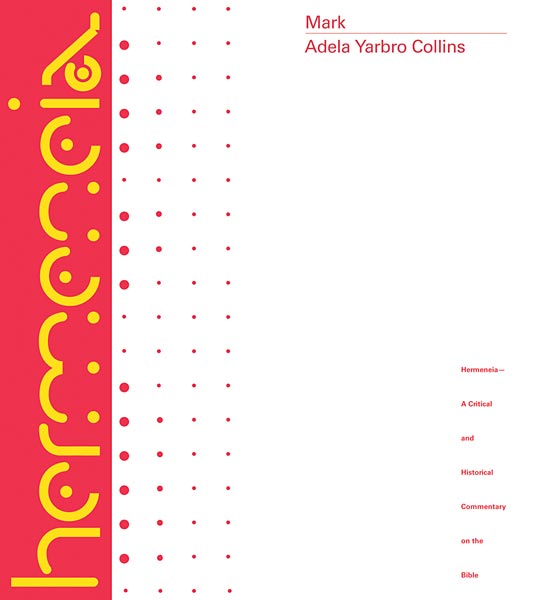
Professor Adela Yarbro Collins brings to bear on the text of the first Gospel the latest historical-critical perspectives, providing a full treatment of such controversial issues as the relationship of canonical Mark to the "Secret Gospel of Mark" and the text of the Gospel, including its longer endings. She situates the Gospel, with its enigmatic portrait of the misunderstood Messiah, in the context of Jewish and Greco-Roman literature of the first century. Her comments draw on her profound knowledge of apocalyptic literature as well as on the traditions of popular biography in the Greco-Roman world to illuminate the overall literary form of the Gospel.
The commentary also introduces an impressive store of data on the language and style of Mark, illustrated from papyrological and epigraphical sources. Collins is in constructive dialogue with the wide range of scholarship on Mark that has been produced in the twentieth century. Her work will be foundational for Markan scholarship in the first half of the twenty-first century.
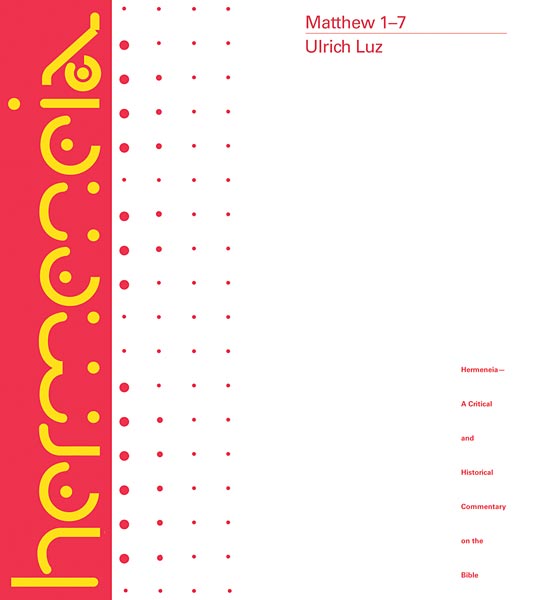
The birth narrative, the baptism and temptation of Jesus, the beginnings of his Galilean ministry, and the Sermon on the Mount are all brilliantly illumined by Ulrich Luz's expert textual and historical-critical analysis and theological commentary. Luz brings special attention to the subsequent history of Christian appropriation of Matthew in homiletical and artistic interpretation, and addresses the terrible legacy of Christian anti-Judaism. This volume completes Luz's three-volume commentary on the Gospel of Matthew in the Hermeneia series. A translation of the earlier German edition of Matthew 1-7 appeared in Fortress Press's Continental Commentary series. The text has been thoroughly revised and updated.
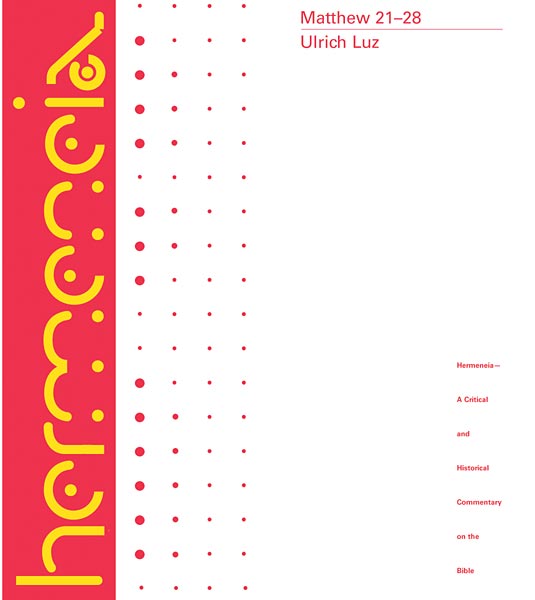
In this third volume, Luz brings his superlative analysis of Matthew's Gospel to a close. He is renowned for both his discerning exegetical insights as well as his tracing of the effects the text has had throughout history — in theological argument, art, and literature. This final section provides in-depth treatment of Jesus' final days — his entry into Jerusalem, the Passion Narrative, and post-resurrection appearances.

This is the second of a three-volume commentary on the gospel of Matthew from Europe's leading Matthew scholar. Volume 1 Matthew 1-7 was previously published in the "Continental Commentaries" series. Luz's commentary is especially noteworthy, not only for his incisive exegesis, but also his keen eye for the importance of the history of interpretation and his attention to the relevance of the New Testament for contemporary Christian ethics. This commentary includes excursuses on Son of David; Matthew's Interpretation of the Parables; Peter in the Gospel of Matthew; and Son of Man.
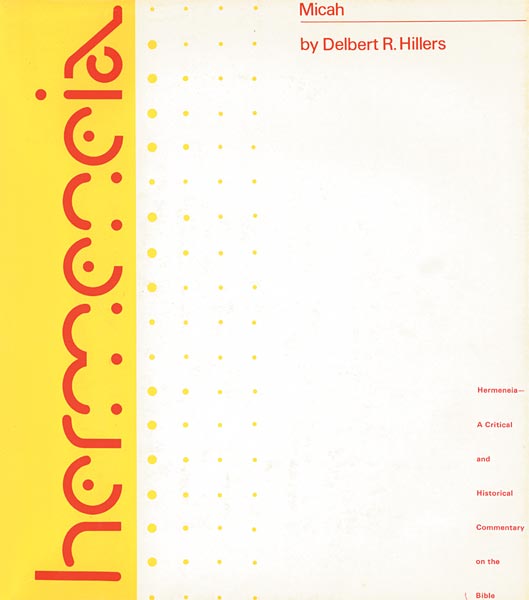
With refreshing respect for the reader, Hillers lays out the evidence for his case cautiously and asks the readers to form their own decisions ... He very sensitively explicates the many figures of speech and collects a most helpful set of biblical passages which illuminate the text. His skill in saying much in a few, well- chosen words is impressive.
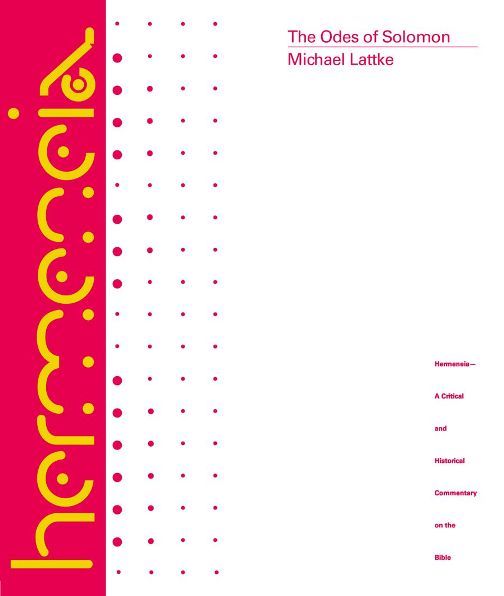
Known until the 18th century only from fragmentary quotations and references in patristic literature, more recent discoveries of Greek, Coptic, and Syriac manuscripts have drawn fresh interest and attention to the Odes of Solomon, a collection of Christian poetry from the second century rich in imagery and exhibiting an exotic spirituality. Internationally renowned expert on the Odes Michael Lattke provides a meticulous translation and discussion of the textual transmission of the Odes, along with judicious commentary on the place of the Odes in the development of Gnosticism, Logos theology, and early Christian worship. Historians and students of early Christianity will find this commentary a valuable resource for years to come.
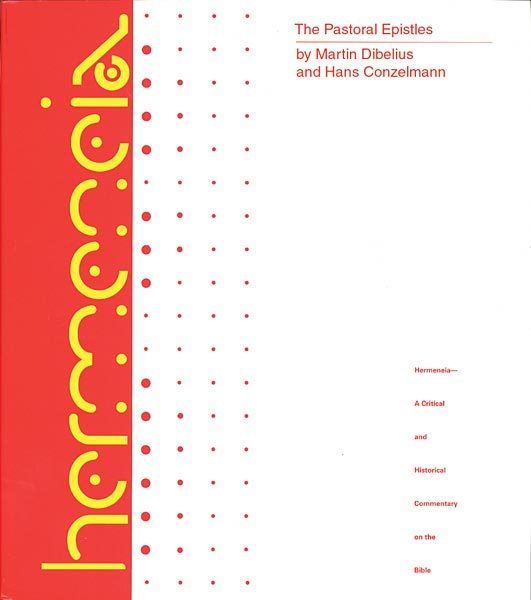
There are many English commentaries on these letters, but none so replete with quotations (some quite extensive) from extra-biblical materials, whether Hellenistic, Jewish, or Christian, that bear on the linguistic and conceptual problems the letters contain.
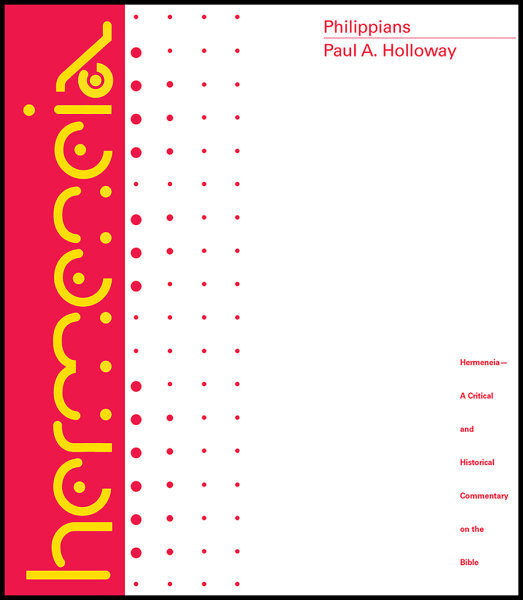
Paul’s letter to the Philippians offers treasures to the reader—and historical and theological puzzles as well. Paul A. Holloway treats the letter as a literary unity and a letter of consolation, according to Greek and Roman understandings of that genre, written probably in Rome and thus the latest of Paul’s letters to come down to us.
Adapting the methodology of what he calls a new history of religions perspective, Holloway attends carefully to the religious topoi of Philippians, especially the metamorphic myth in chapter 2, and draws significant conclusions about Paul’s personalism and “mysticism.” With succinct and judicious excursuses treating pertinent exegetical and theological issues throughout, Holloway draws richly on Jewish, Greek, and Roman comparative material to present a complex understanding of the apostle as a Hellenized and Romanized Jew.
Hermeneia is designed for the serious student of the Bible. It makes full use of ancient Semitic and classical languages; at the same time, English translations of all comparative materials—Greek, Latin, Canaanite, or Akkadian—are supplied alongside the citation of the source in its original language. Insofar as possible, the aim is to provide the student or scholar with full critical discussion of each problem of interpretation and with the primary data upon which the discussion is based.
The editors of Hermeneia impose no systematic-theological perspective upon the series (directly, or indirectly by selection of authors). Its authors lay bare the ancient meaning of a biblical work or pericope. In this way the text's human relevance should become transparent, as is always the case in competent historical discourse. However, the series eschews for itself homiletical translation of the Bible.
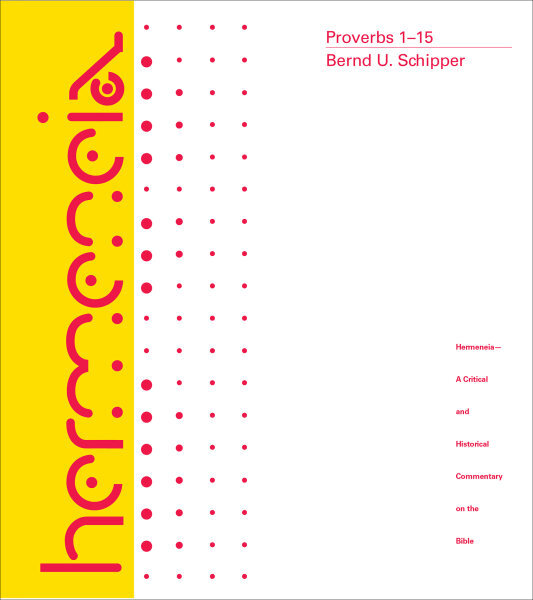
The book of Proverbs is more than the sum of its parts. Even if some individual proverbs and collections could be older, the overall composition stems from the late Persian or early Hellenistic period. In its present form, the book of Proverbs introduces the scribal student to the foundations of sapiential knowledge and its critical reflection. By discussing different worldviews and contrasting concepts on the relationship between God, the world, and humanity, the book of Proverbs paves the way to both the critical wisdom of Job and Ecclesiastes and the masterful combination of Wisdom and Torah in Sirach.
Scholarly research has long situated the book of Proverbs within ancient Near Eastern literature but declared it to be something "alien" within the Hebrew Bible. In contrast to such a position, the present commentary interprets the book of Proverbs against the background of both ancient Near Eastern literature and the literature of the Hebrew Bible. One aim of the commentary is to discuss new ancient Near Eastern parallels to the book of Proverbs, with a special focus on Egyptian wisdom literature, including Demotic texts from the sixth to fourth centuries BCE.
An equally important aim of this commentary is a detailed exegesis of Proverbs 1-15 as well as an analysis of the overarching strategy of the book of Proverbs as a whole. Taking the prologue of the book in Prov 1:1-7 as a hermeneutical key, the book of Proverbs turns out to be a masterful composition addressing both the beginner and the advanced sage. With its allusions to other biblical texts, including the book of Deuteronomy, the Psalms and the Prophets, the book of Proverbs can be connected to forms of scribal exegesis in Second Temple literature. By using the same scribal techniques as other literati of his time, the scribal sage responsible for some parts of the book as well as its final compilation seeks to provide deeper insight into the complex world of scribal knowledge and sapiential thought.
Hermeneia is designed for the serious student of the Bible. It makes full use of ancient Semitic and classical languages; at the same time, English translations of all comparative materials—Greek, Latin, Canaanite, or Akkadian—are supplied alongside the citation of the source in its original language. Insofar as possible, the aim is to provide the student or scholar with full critical discussion of each problem of interpretation and with the primary data upon which the discussion is based.
The editors of Hermeneia impose no systematic-theological perspective upon the series (directly, or indirectly by selection of authors). Its authors lay bare the ancient meaning of a biblical work or pericope. In this way the text's human relevance should become transparent, as is always the case in competent historical discourse. However, the series eschews for itself homiletical translation of the Bible.






- Adapt your commentary collection month-to-month based on the book or books you are studying.
- Build your commentary library strategically without hundreds of dollars of upfront investment.
- Never get stuck with commentaries you rarely use - swap them out each month as your needs change.



